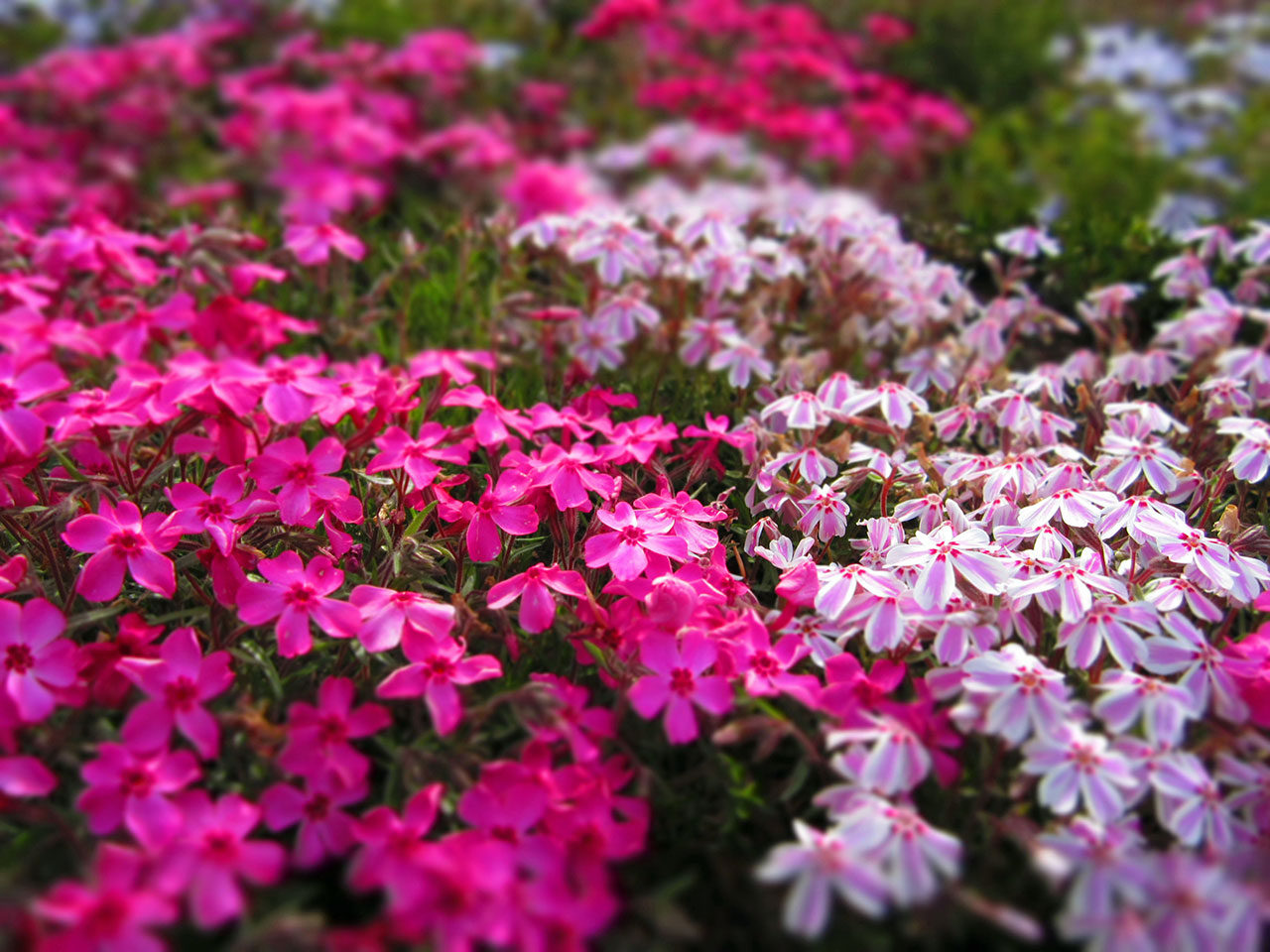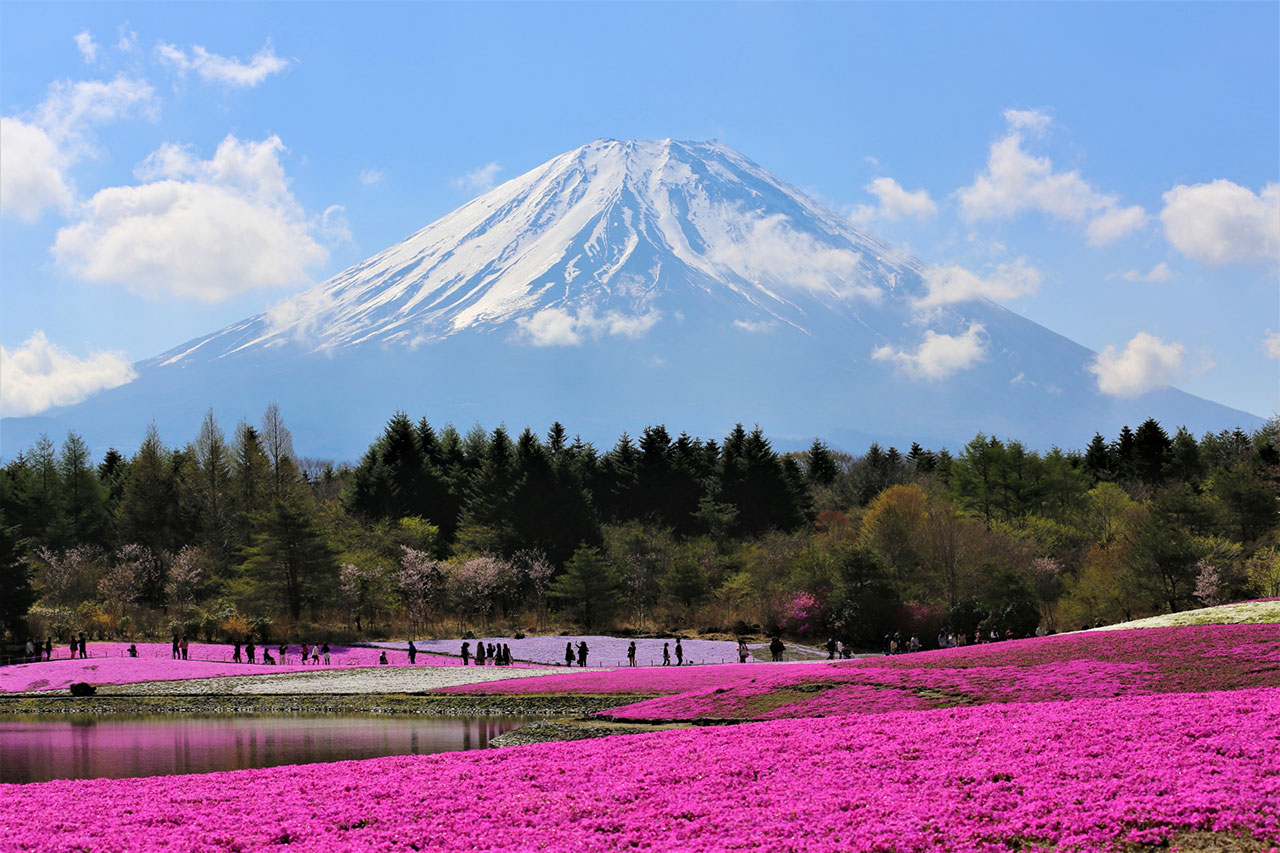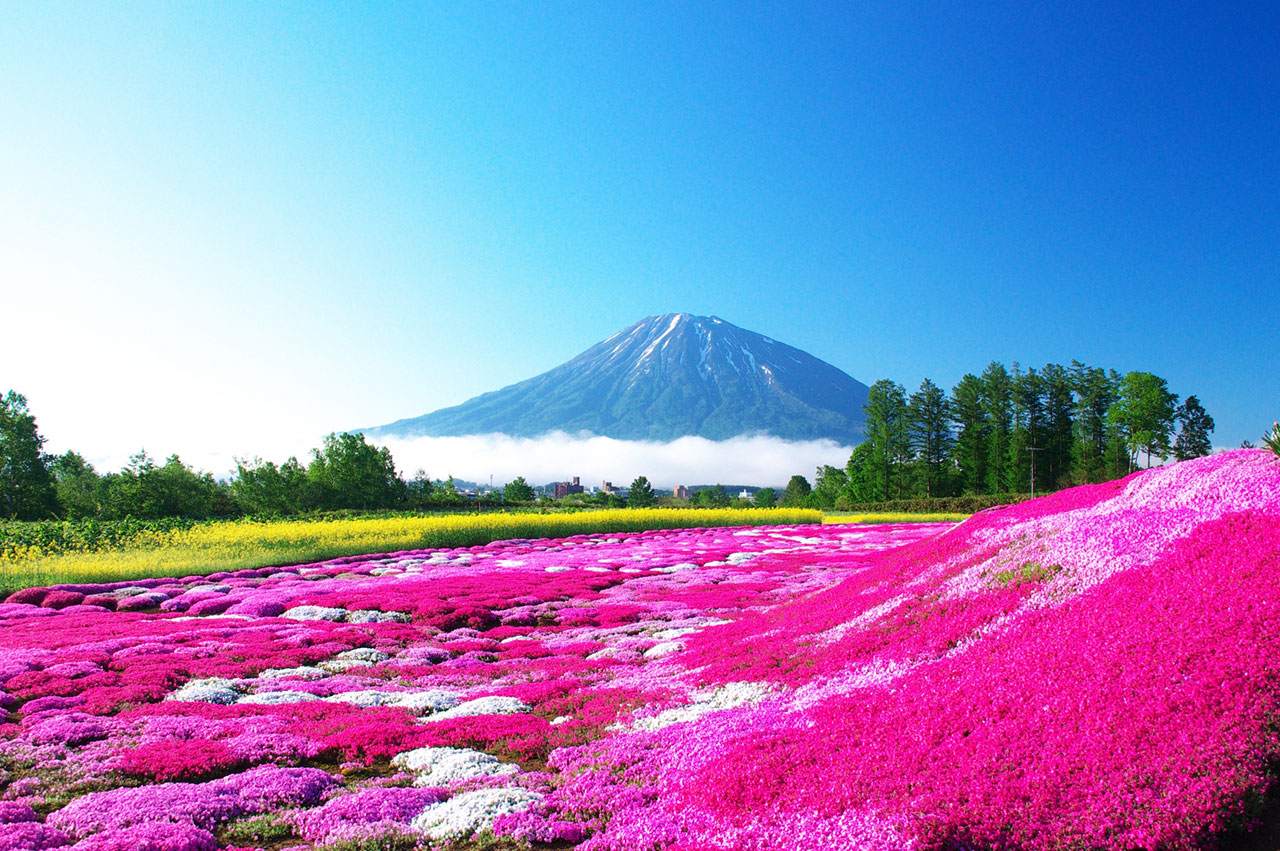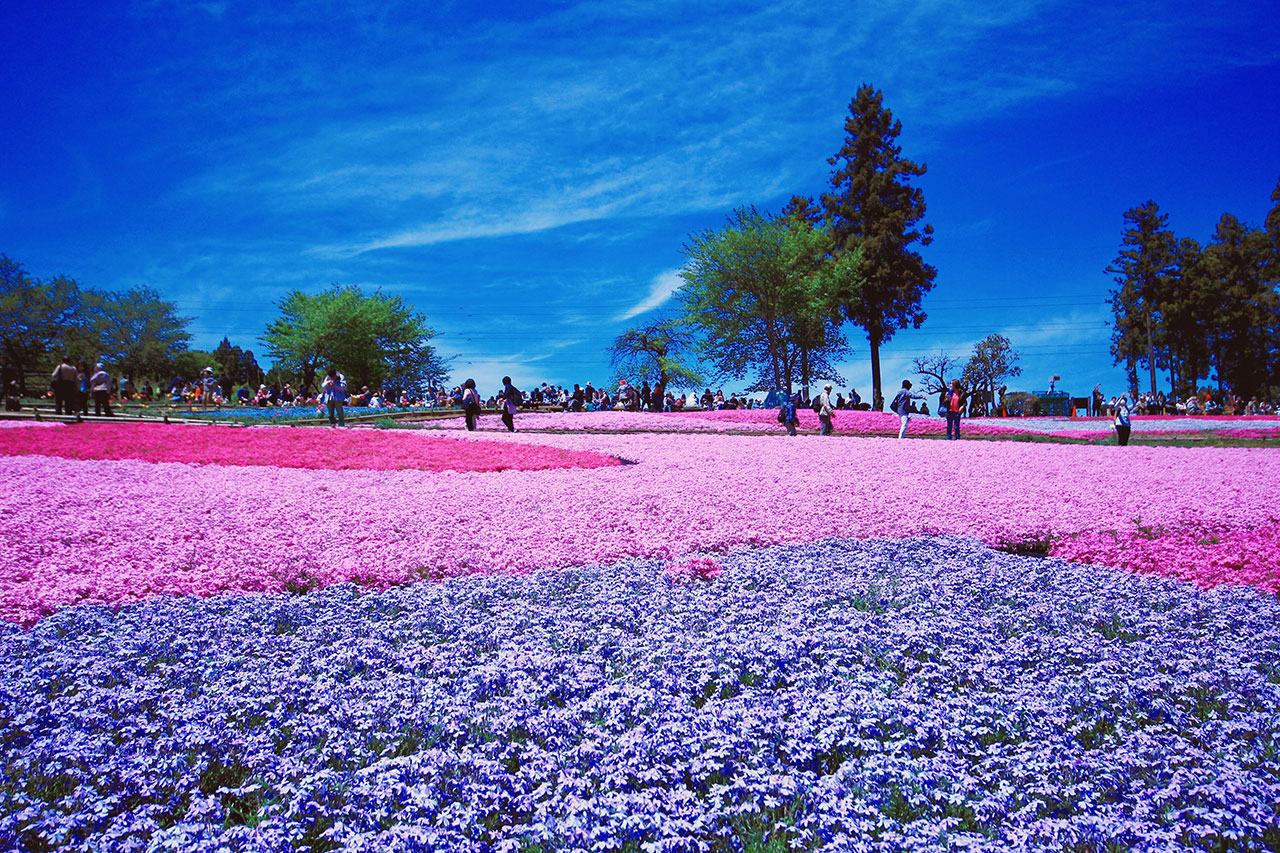May: Shibazakura
April 14, 2021

A bright pink sea below the peak of Mt. Fuji, the unusual view of the famous mountain is all down to a humble flower known as shibazakura. Often called moss phlox in English and also known as creeping phlox and phlox subulata, this dense, carpeting flower is small but impressive. The evergreen only reaches 10cm in height, but each plant can grow to cover a 50cm-wide area. It’s this ability to blanket the floor with delicate flowers that has seen it become a star of Japanese outdoor sightseeing, with Fuji being its most famous backdrop.
Blooming from mid-April to May, the flowers knit together as they open and vary from bright pinks to pale blues. In the Fuji Motosuko Resort, the annual Fuji Shibazakura Festival is held for approximately six weeks from the middle of April, depending on the length of the blooming. This coincides perfectly with the last remaining snow on Mt. Fuji, making for a truly beautiful view. The fields use around 520,000 shibazakura, combining deep and pale pinks with white for a striking visual effect. Planted in vast swirls, the flowers surround Ryujin Pond and careful visitors may be able to spot the eight different varieties in use.

As well as admiring the flowers and Fuji together, visitors can enjoy the festival atmosphere that surrounds the plants. Stalls sell flower-themed souvenirs and snacks as well as moss phlox plants to be taken home for fond memories. There are also plenty of delicious treats to try as the Mt. Fuji Delicious Food Festival (Fujisan Umaimono Festa) is held at the same time. The festival brings delicacies from across Yamanashi and neighbouring prefectures to one handy venue, so noodle-lovers can try Yoshida Udon or Fujinomiya Yakisoba while crispy Mishima potato croquettes are a firm favourite for everyone. A special dish created especially for the event is also on offer—the Shiba Sakura Ramen, along with cute sweets such as parfait and macarons on the observation deck of Sakura Cafe Fujiyama Sweets. Along with street performances, the incredible views and about 1.6 hectares of flowers to admire, this is a perfect stop-over on the way to Fuji and the surrounding five lakes, or Hakone!

There are, of course, more moss phlox gardens in Japan, each with their own unique views. Up in Hokkaido, a local man called Kazuo Mishima opens his carefully tended garden up to visitors each year. With Mt. Yotei in the background and the knowledge that each plant has been grown by the owner himself, it is a beautiful place to explore. As it is colder in Hokkaido, the flowers don’t bloom at Mishima Shibazakura Garden until late May and early June, so it’s ideal if you arrive in Japan a little later. The northern-most island also has two more shibazakura spots: the 10-hectare Higashimokoto Shibazakura Park in Abashiri and Takinoue Park in Monbetsu, with both running from early May to early June.

A little closer to Tokyo, Hitsujiyama Park in Saitama is another popular shibazakura spot. Backed by rolling hills, the park uses nine varieties of moss phlox, with a bright contrast formed between the pink, purple and white petals. Many bus tours run from Tokyo from mid-April to early-May combining a trip to Hitsujiyama Park with the stunning Ashikaga Flower Park in Tochigi, which is filled with stunning wisteria trees and blooms at a similar time.
* The information on events and facility openings in this article is subject to change due to the coronavirus (COVID-19) pandemic. Please check the website of each facility for details.
For more details, contact DMC Japan to discuss ideas, locations and rates.
Contact Us


